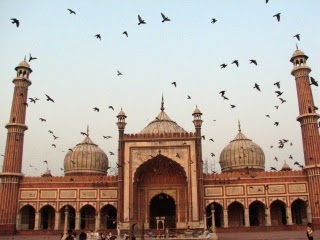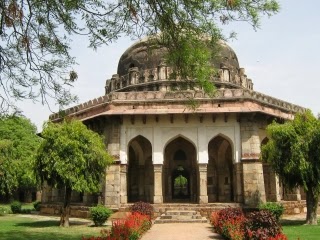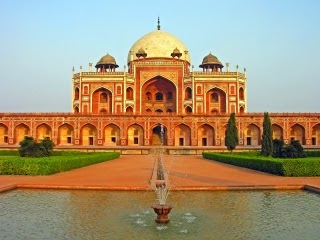Places To Visit In Delhi (Heritage Tourism)
Mutiny Memorial At North Ridge Near Hindu Rao Medical Center.
Mutiny Funeral is situated on northern ridge designed during the English interval. The memorial includes a declining structure of unsociable medieval design raised on a higher base of local hard rock introduced with red sand rock.
The structure is octagonal in shape on the outside and is round internal. The structure was constructed in 1863 in memory of the military of the Delhi Area Force who were murdered in action or passed away of injuries or illnesses between 30 May and Twentieth Sept, 1857.
Dara Shikoh Library Building At Kashmere Gate
Dara Shikoh Collection Developing is famously known by its name due to its association with Dara Shikoh, oldest son of Shahjahan, the Mughal emperor. It is situated within G.G.S. Indraprastha University University at Kashmere Checkpoint.
It was once the residence of Ali Mardan Khan, Mughal Viceroy of Punjab (1639 A.D.), later increased by the English and used as residence of Sir Bob Octherlony during 1803 AD. It had also located a Government. College and school from 1804 to 1904 A.D. During this interval, the property had gone through considerable changes.
Maqbara Paik Opp. G.T.K.Bus Store.
Maqbara Paik basically means 'tomb designed for a courier. It's a Lodhi interval monument and designed in lakhauri stone brickwork finished with lime plaster.
Turkman Gate At Asif Ali Road
The Turkman Checkpoint is so called because it can be found near the Grave of Shah Turkman. It is one of the four existing enduring gateways of Shahjahanabad designed during the rule of Shahjahan in Seventeenth millennium.
Pavilion (Baradari) At Qudsia Garden
An historical building known as Baradari of Quidsia Begum of Mughal interval is situated in Quidsia Lawn near Kashmere Checkpoint. The Lawn which was surrounded by a walls included a structure, two baradaris and certain other structures within it.
The structure was initially a citadel like framework, surrounded by excellent surfaces that had burjies in all sides. On 2nd July 1754, the Emperor Ahmad Shah and King mother Qudsia Begum were limited here and later implemented.
During 1857, the English shifted their soldiers here and made heavy bombardment on Kashmere Checkpoint.
Tomb At Sadhana Enclave
The tomb is a domed framework of Lodhi interval (15th Century) in the center of the personal community. It has curved entry on the northern, southern and eastern while on the western there is a mihrab.
Baradari At Sadhana Enclave
Baradari is an curved area having seven coves from northern to southern and three coves deep connected to Tughlaq interval (14th Century) in the center of the personal community.
Ghalib Haveli At Ballimaran, Chandni Chowk
A portion of Haveli of Mirza Ghalib situated at Gali Qasim Jaan, Ballimaran, Chandni Chowk where the excellent poet remained during 1865 to 1869 and spent the last stage of his lifestyle.
A memorial art gallery was set up at Mirza Ghalib Haveli showing various aspects of Ghalib's lifestyle and performs and is started out to community on all days from 10 A.M. to 5 P.M. except on Monday and Gazetted holidays.
Tomb Of Mohd. Quli Khan near Qutub Minar
Muhammad Quli Khan was the sibling of Adham Khan. Adham Khan was the son of Maham Anga, the wet health professional of the Mughal emperor Akbar. He rebelled against the emperor and is said to have been murdered by being tossed off the parapet. The two bros were generals in the elegant military. Quli Khan's tomb was designed in the early Seventeenth millennium.
This was the seat of Metcalfe's Dilkusha, the weekend getaway away from the busyness of the town of Delhi. Charles Metcalfe worked as a negotiator between the East Indian Organization and the Mughal Leader.
It is said that he remodeled this position for himself because he wanted to keep a watch on Emperor Bahadur Shah II, who had his Zafar Mahal Palace in Mehrauli to spend his summer season. During the Great Rebel of 1857 the house was ransacked and discontinued.
Bijri Khan's Grave At R.K.Puram, Sector-III
The tomb is a massive framework designed of stones brickwork of Lodhi interval (15th Century). The dome increases from a 16 on the sides drum and is crowned with a red sand rock and stone best.
Tomb (Unknown) Near Bijri Khan's Grave at R.K.Puram,Sector-III
The tomb is a domed framework designed of rubblemasonry with slopping surfaces during Lodhi interval (15th Century). It contains entrances on three sides and mihrab on western side.
Minar At Hashtsal Village
The Minar is very stunning and was designed by the Mughal Emperor Shajahan (17th Century). It is a three-storeyed brick-built declining minar 17m excellent faced with angular and semi-circular flutings red rock, with a filter stairway leading to its top. It increases from a two-tired system.
Bara Lao Ka Gumbad & Baradari at Vasant Vihar
The tomb "Bara Lao Ka Gumbad' as it is locally known, and the Baradari inside the DDA Park, Vasant Vihar belongs to the Lodi period. Any other information such as who built these monuments etc is not available. The tomb stands on a high terrace. Over the terrace to the west is a battlement wall mosque containing 15 mihrab recesses. The North West and south west angles of the mosque are strengthened by circular bastions topped by decorative minarets, which are repeated on the central mihrab.
The tomb square in plan has arched entrances on the north, south and east while on the west there is a mihrab. The dome springs from a sixteen sided drum ornamented with battlements. Decorative guldastas mark the angles of the drum, which have been destroyed.
The parapet and the drum are crowned with battlement / kangura parapets incised in plaster and were originally ornamented with blue tiles that have now completely disappeared leaving only traces at few places. The interior is decorated with inscriptions and incised plaster work. Gol Gumbad (Near Aman Hotel, Lodhi Road)
The Tomb belongs to the Lodi period. It has a square plan similar to the other Lodi rulers.
Shahjahanabad Redevelopment Corporation
Shahjahanabad Redevelopment Organization is a Organization limited by Stocks not for benefit under section 25 of the Companies Act, 1956. Primary of the Organization is to advertise servicing of designed and organic culture in the Nationwide Investment Area of Delhi which needs to be secured, nurtured and managed by all people, servicing as an mind-set in town's town growth procedure, servicing of the social and town culture which would consist of architecturally important and artist performs, traditional attractions and residing historical monuments having socio-cultural value not with the purpose of benefit.
THE MAIN OBJECTS OF THE COMPANY TO BE PURSUED ON ITS INCORPOATION ARE:
1. To enhance servicing of designed and organic culture in the Nationwide Investment Area of Delhi which needs to be secured, nurtured and managed by all people, servicing as an mind-set in the town's town growth procedure, servicing of the social and town culture which would consist of architecturally important and artist performs, traditional attractions and residing historical monuments having socio - social value not with the purpose of benefit.
(B) THE OBJECTS INCIDENTAL OR ANCILLARY TO THE ATTAINMENT OF MAIN OBJECTS ARE:
1. To protect culture structures, culture areas and other locations of important value.
2. To protect and enhance environmental resources of the town such as the riverfront, historical town surfaces, gateways, connects, scenery, community venues, edicts and rock cut structures.
3. To take actions to enhance social solutions such as Water Provide, Sewerage, Electricity Provide and Public Transport in NCT of Delhi and for this objective to raise or organize funding from, and / or otherwise take advantage as far as possible, sources such as the Jawaharlal Nehru Nationwide Urban Restoration Objective (NNURM) or identical techniques as may be introduced every now and then.
4. To protect and enhance traditionally important roads and roof-scapes.
5. To enhance the re-use of old structures for safe and appropriate reasons.
6. To come up with growth plans/programmes and redevelopment plans/programmes and apply such plans/programmes or support in their performance through community private collaboration or other frameworks, for designed and organic culture, traditional attractions, residing historical monuments and associated solutions conditions in NCT of Delhi and the surrounding locations and to encourage and designate experts, academicians and professionals for any field needed for the efficient performance of various guidelines, programs and programs as may be needed every now and then.
7. To adhere to the guidelines of UNESCO, that allows Globe Heritage status to historical monuments like the Qutab Minar.
8. To link the culture structures to the adjacent big historical monuments for their traditional importance and importance.
9. To get ready and post online catalogs of culture resources such as traditional structures, locations and areas with reference to their relevant interval and importance in history.
10. To organize initiatives with respect to servicing, servicing and recovery of culture structures and historical monuments with other companies, such as non-government companies working in this part.
11. To organize with the Historical Survey of Indian with respect to study of recognition of culture structures, historical monuments, locations and scenery.
12. To offer support to people, organizations and non-governmental companies in their initiatives to save, protect, venture, recover, protect or sustain all or in aspect various components or town culture.
13. To definitely organize with other government organizations involved in the servicing of culture structures, culture areas and other locations of important value.
14. To bring out recovery perform of culture structures according to worldwide recognized medical methods..
15. To dissipate knowledge - both educational and technological, for allowing a individual involved or fascinated itself in the art of servicing, servicing, servicing and recovery of culture structures and allied issues.
16. To obtain by buy, rental, gift, grant, heritage, bequest, exchange or otherwise from a individual, company, govt or organization at all, and to keep all or aspect of the portable or immovable qualities of all explanations - areas, structures, easements, rights of common now or hereafter interested in the ownership of any individual or whole body and used or dedicated to or for any objective of the Organization.
17. To sustain, cope with and manage such portable and immovable qualities of all explanations of the Organization.
18. To trader cope with payments of the Organization not immediately needed upon investments or in such a way as every now and then may be determined by the Board of Administrators of the Organization, and to offer cash with or without protection.
19. To start agreement with any Government or Power, whether Superior, Condition, Region, Public, Local or otherwise that may seem to be favorable to the objects of the Organization or to any of them and to obtain from any Government or Power such rights, discounts and rights as the Organization may think suitable and to obtain, bring out, exercise and adhere to any such preparations rights, rights and discounts.
20. To enhance proper protection and maintenance of culture rests so as to keep them free of encroachments, illegal profession, illegal business and illegal development of any type at all.
21. To guidance people, division, organizations, companies, NGO's & such other people involved & involved with any type of actions and issues with regards to culture.
22. To organize and accomplish undertaking of educational programs, training and growth programs, events, workshops and symposia on issues with regards to servicing of culture and to offer technological and management support to individual, divisions, organizations, companies, non government companies and such other people involved with and involved in servicing of culture.
23. To suggest to divisions involved in assessment with the Ancient Department, demolition of any organic or designed culture or aspect of organic or designed culture framework or building which is regarded to be standing alarmingly and risky for environment and people.
24. To take necessary actions either by itself or through the involved Department of the Centre or Condition Government authorities, in the marketing of culture travel and leisure & its related triggers.
25. To enhance, support, advise, provide and offer consultative, participative and control solutions in all issues with regards to and all aspects of servicing and upgradation of culture sites such as policy ingredients, marketing, growth, performance, development, operation, servicing, control and finance thereof.
26 To set up, offer, sustain and conduct or subsidize archeological analysis labs and trial classes for medical and technological studies, assessments and assessments of all types and devices and / or to attract or draw out programs for advertising medical, technological, social, economical and educational analysis and growth and support in the performance and marketing of such programs and to advertise archeological studies and studies both medical and technological research, endowing or assisting labs, museums, classes, collections, lessons, conventions and conventions and by providing or leading to the prize of scholarships and grants, awards, allows to students and generally to encourage, enhance technology of any type that may be regarded useful to the company.
27. To take such actions by personal or written is attractive, community conventions or otherwise as may every now and then be considered convenient for the objective of obtaining efforts to the resources of the Organization or of resources in which the business is enthusiastic about the shape of efforts, yearly subscribers or otherwise.
28. To focus on technological and medical importance of social and town culture.
29. To set up or sustain memorials and traditional landscapes.
30. To start and operate current overdraft account, loan, cash credit or down payment or any other type of records with any bank/financial organization.
31. To start contract, agreements and preparations with any Department of Government, or regulators, municipal, local or company, company or others, individual or people for undertaking of the objects of the Organization.
32. To signify, settle and otherwise cope with the involved regulators for obtaining the necessary mortgage approvals, permits, clearances, read write for applying of comprehensive growth performs.
33. To apply, enhance and obtain any act, rental, benefit, concession, certificate or permission of any govt, state or town, provisional buy or certificate of any authority for allowing the company to bring any of its objects into effect, or for increasing any of the abilities of the company, or efficient any modification of the organization's structure or for or any other objective which may seem convenient and to battle any procedures or applications which may seem measured, directly or ultimately, to tendency the Company's interest.
34. To relate, or agree to relate, any claim, demand, argument or any other question, by or against the Organization, or in which the business is fascinated or involved and whether between the Organization and a member of his or their associates, or between the company and third parties, to mediation in Indian or at any position outside Indian, and to observe and perform and to do all functions, actions, issues and things to bring out or apply the prize.
35. To rental, sell, cope in or to otherwise get rid of and to buy, hire or otherwise obtain and sustain suitable structures, flats, furniture and other accessories in Indian for the organization of workplaces, visitor houses.
36. To obtain from any individual, company, govt authority, organization, company or whole body business, whether in Indian or elsewhere, technological details, remedies, know-how, processes, structure, red printing and expert consultancy for servicing of the designed and organic, culture in the and to pay to or to the transaction of such individual, govt authority, organization or whole body business, any fee, royals, bonus, compensation rather than thereof or otherwise make up them in any other way for the solutions delivered by them.
37. To pay out of the resources of the Organization all expenses incurred/properly suffered in connection with the development and signing up of the Organization.
38. To guarantee the payment of cash unsecured or secured by or due under or in respect of any promissory notes, ties, agreements, loans, charges, responsibilities, equipment and investments of any business or of any authority, main, state, municipal, local or of any individual.
39. To get ready redevelopment programs, technological, economical and other types of reviews such as detailed venture reviews etc. for obtaining support under JNNURM and any other identical techniques for Shahjahanabad or any area recognized by Government and other organizations.
40. To acquire, utilize and set up Government Grants, Loans etc for achieving the objects.
41. To keep regular community discussions and come up with legal action according to its goals.
42. To get ready and suggest the socio-economic and business programs for advertising the traditional art & art, business and travel and leisure of the Walled City. To get ready and suggest the moving of business actions to advertise culture travel and leisure in Old Delhi and / or to accomplish town renewal.
43. To start set up, sustain and to stop in Indian or international any workplaces, division workplaces, local workplaces, business centers, display centers, link workplaces and to keep local or citizen representative in any world for the objective of advertising the actions of the company.
44. To undertake and bring out any other activity conductive to any or all of the objects of the Organization to get to know the culture servicing guidelines of the Government.
Bara Lao Ka Gumbad & Baradari at Vasant Vihar
The tomb "Bara Lao Ka Gumbad' as it is regionally known, and the Baradari inside the DDA Park, Vasant Vihar connected to the Lodi interval. Any other details such as who designed these historical monuments etc is not available.
The tomb stands on a higher veranda. Over the veranda to the western is a battlement walls mosque containing 15 mihrab channels. The North West and the western perspectives of the mosque are increased by round bastions lead by attractive minarets, which are recurring on the main mihrab. The tomb rectangle in strategy has curved entryways on the northern, southern and eastern while on the western there is a mihrab. The dome increases from a 16 on the sides drum designed with battlements. Decorative guldastas mark the perspectives of the drum, which have been damaged. The parapet and the drum are crowned with battlement / kangura parapets incised in plaster and were initially designed with red flooring that have now completely vanished leaving only records at few locations. The interior is designed with identities and incised plaster perform.
GOL GUMBAD (Near Aman Hotel, Lodhi Road)
The Grave connected to the Lodi interval. It has a rectangle strategy just like the other Lodi kings.


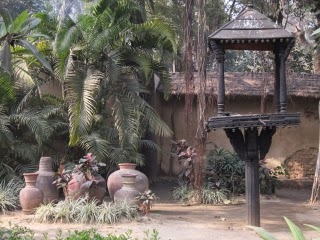
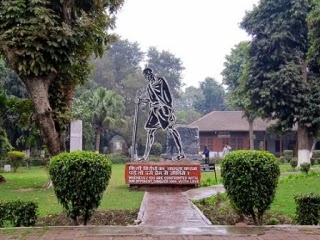


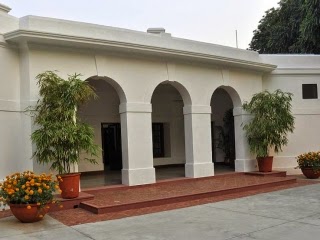





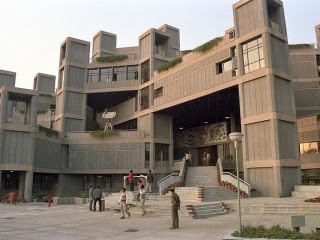






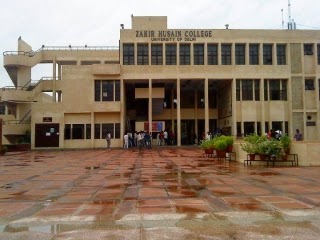



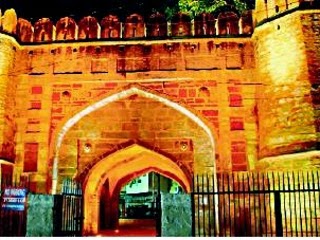
.jpg)


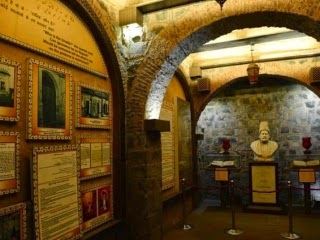


%2Bnear%2BBijri%2BKhan's%2BTomb%2Bat%2BR.K.Puram%2CSector-III.jpg)


.jpg)

